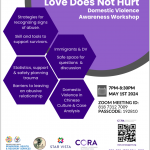National Policy Debate Topic :Criminal Justice Reform
Resolved: The United States federal government should enact substantial criminal justice reform in the United States in one or more of the following: forensic science, policing, sentencing.
By: Unikitty (6G) & Mandy (8G) – Area of focus: Sentencing
“We uncovered shocking evidence of racial discrimination in jury selection in every state. Prosecutors have excluded nearly 80% of African Americans qualified for jury service. Some prosecutors employed by state and local governments actually have been trained to exclude people on the basis of race and instructed on how to conceal their racial bias. African Americans have been excluded because they appeared to have “low intelligence”; wore eyeglasses; were single, married, or separated; or were too old for jury service at age 43 or too young at 28. They have been barred for having relatives who attended historically black colleges; for the way they walk; for chewing gum; and, frequently, for living in predominantly black neighborhoods. Equal Justice Initiative, August 2010.
Jury selection is racist and illegally biased in certain states. The 1875 Civil Rights act prohibited racial discrimination in many aspects, including jury selection. Though it was declared unconstitutional in 1883, the 1964 civil rights act was created and passed to end all racial discrimination in all everyday aspects including schools, jury selection, and publicly shared facilities. The staff of the Equal Justice Initiative (EJI) have looked closely at jury selection procedures in Alabama, Arkansas, Florida, Georgia, Louisiana, Mississippi, South Carolina, and Tennessee. Throughout history, juries consisting of all white judges have enabled countless white people to escape justice for crimes against those of color. Emmett Till’s case is a perfect example for this. Till was a fourteen year old boy who was dared to flirt with a white woman at a store. Murdered shortly after in a gruesome fashion, Emmet Till’s life was over before it even started. And that’s not all. The two white men who ended Till’s life continued on with their everyday lives after being declared innocent by an all white jury. They were never punished, never condemned, never even questioned. Emmett Till is just one case of many.
Juries without racial diversity are both unjust and biased. They lead to unfair, personally influenced deliberations at court. For an example, let’s examine the book “To Kill A Mockingbird” by Harper Lee. In the book, a black man named Tom Robinson was accused of raping a white woman. Evidence made it clear that Tom was innocent, but with an all white jury standing against him, he was declared guilty. Not everyone may be Tom Robinson today in court, but it’s still clear that an all white jury would have an obvious racial bias, intentional or not. Psychologist Samuel Sommers proved this when he ran a mock jury experiment with 200 adults. He separated the adults into two groups: an all white jury and a diverse one. The results found that the all white jury was automatically already 10 percent more likely to assume the defendant guilty without even thinking than the racially diverse one. In Sommer’s mock jury experiment, the defendant was a black man with charges of murder. Many colored people accused and convicted of crime are sent to jail simply because they are colored. Take Timothy Tyrone Foster. Accused of killing an elderly white woman almost fifty years ago, he was sentenced to death row. It was revealed in Harold Chamber’s, now a federal administrative law judge, testimony that the then District Attorney Stephen Lanier and Clayton Lundy, an African American investigator, had been arguing. Lanier had refused to put a black person on the jury, and Lundy kept insisting that he did, saying that it would “come back to haunt you.” Though Lundy kept trying to insist on putting a black person on the jury, Lanier kept repeating over and over again ‘No, I’m not going to do it. I’m not going to put a black person on this jury.’ This proves how illegal racial biases at court can kill or sentence people to death without even giving the tried person a chance. It also shows the extent of just how much racism a white judge can hold towards a black person. There were many many white people who shared Stephen Lanier’s view on racial equality. If everyone on a jury panel was white or prejudiced like Lanier, would a colored person even have a chance if tried? I don’t think so. Now that we have finished exploring the harms and significance in depth, let’s move onto our plan.
Reforms can be slow, but they will and can happen. Dedicated and thorough enforcement of anti-discrimination laws designed to prevent racially biased jury selection must be undertaken by courts, judges, and lawyers involved in criminal and civil trials, especially in serious criminal cases and capital cases. Prosecutors who are found to have engaged in racially biased jury selection should be held accountable and should be disqualified from participation in the retrial of any person wrongly convicted as a result of discriminatory jury selection. Prosecutors who repeatedly exclude people of color from jury service should be subject to fines, penalties, suspension, and other consequences to deter this practice. Equal Justice Initiative, August 2010 While we might not undo the hundreds of years of suffering, we can start taking the first steps to undoing the racial injustice that we have caused.
If juries were racially diverse, the outcome of trials would not only be more accurate, but also fair and equal. A jury wouldn’t lean towards letting one man go because of his lighter skin or deeming another one guilty for the same reason. If we had racially diverse juries, cases like Tom Robinson and Emmet Till’s wouldn’t happen, and we would have a higher chance at bringing justice to all. All women and men were created equal, so it’s time we started acting like it.
Sources:
- https://www.britannica.com/event/Civil-Rights-Act-United-States-1964
- https://eji.org/wp-content/uploads/2019/10/illegal-racial-discrimination-in-jury-selection.pdf
- https://www.dol.gov/agencies/oasam/civil-rights-center/statutes/civil-rights-act-of-1964#:~:text=In%201964%2C%20Congress%20passed%20Public,religion%2C%20sex%20or%20national%20origin.&text=It%20also%20strengthened%20the%20enforcement,and%20the%20desegregation%20of%20schools.
- https://www.splcenter.org/william-lewis-moore
- https://sparq.stanford.edu/solutions/diverse-juries-make-better-decisions-0









